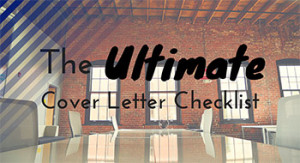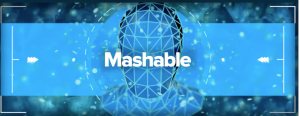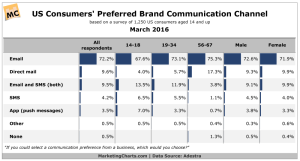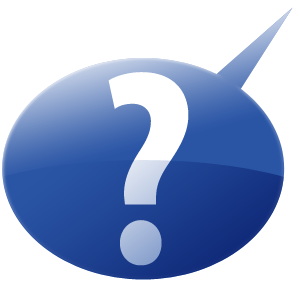 Peanut butter and jelly. Milk and cookies. Resumes and cover letters. Some things are just better together.
Peanut butter and jelly. Milk and cookies. Resumes and cover letters. Some things are just better together.
Now, it may not be delicious or sweet—or even very good to eat—but a cover letter is still one very important half of a perfect pair—at least when it comes to applying for jobs. A cover letter is a short, one-page letter that you send along with your resume when applying for a job. It allows you to showcase your skills, interest, and intent, and it is used to expand upon the information in your resume, particularly as it relates to your work experience. Crafting the perfect cover letter is extremely important because it gives you the opportunity to explain, in detail, how and why you are the perfect fit for a particular position. It also gives you a chance to show your personality and demonstrate to the employer why the company would benefit from hiring you.
The Cover Letter Checklist: What To Include
✓ The same full contact information as your resume. Include your name, mailing address, phone number, and email address and a link to your LinkedIn profile or, if you have one, your personal website.
✓ A consistent look. Make sure that your resume and cover letter match in style and presentation.
✓ Paragraph sections. Include a salutation, opening (one paragraph), main body (one to two paragraphs), and closing (one paragraph).
- Salutation: This is your greeting (such as Dear Ms. Meya Fransson). Try to get an exact name instead of using To Whom It May Concern.
- Opening: Briefly introduce yourself. State the position you are applying for and why you are a great fit. Demonstrate to the reader your strengths in a few powerful lines.
- Main body: Get to the nitty-gritty about how and why you are best for the job. Look at the qualifications, experience, and skills outlined in the job description and show the reader how you match these. Explain some of your greatest past accomplishments. Focus on the company’s requirements and what it needs; try to do so without the use of “I” statements. When writing this section, always keep the following question in the back of your mind: Why should we hire you?
- Closing: This should be a quick summary of what you talked about in the body to reiterate what you bring to the table. Thank the employer and suggest a meeting. Sign off in a polite and professional manner.
✓ The right amount of white space—not too much or too little.
✓ A length of about half a page (one full page including your contact information and that of the recipient).
✓ No spelling, grammar, or punctuation errors.
✓ Personalization. The letter must include a salutation and be addressed to the right person.
✓ Your key skills as they relate to the position being applied to, written in the same way that they are written in the job posting to increase your chances of making it through the applicant tracking system (ATS).
✓ The reasons why you would be best for the position. Include knowledge, skills, and experience as they relate to the job posting.
- NOTE: Each and every cover letter you write must be tailored to a specific job and employer. You cannot reuse a cover letter or work from a template, simply changing words here and there. The more customized your letter is, the greater your chances will be of making it through the system, getting your letter read by the hiring manager, and getting an interview.
What To Omit And Avoid
✓ Avoid clichés, such as the following:
- “To Whom It May Concern”
- “My name is . . .”
- “I am writing to express my interest in . . .”
- “I’m probably not the best candidate, but . . .””I am applying for the role of [title] at [Company] . . .”
✓ Never reuse a cover letter. Start fresh each and every time. It’s okay to use a guideline, but never use the same cover letter twice.
✓ Don’t be vague. Be specific, especially in outlining your skills as they relate to the position.
✓ Don’t repeat your resume. Instead, discuss your work history and emphasize any major accomplishments that relate to the position you’re applying for. Expand on certain aspects in detail to tell a story about your accomplishments, but don’t tell the reader what he or she already knows.
Design Elements
✓ Be consistent. Make sure that your resume and cover letter match in style and presentation.
✓ Keep it short. One page, at most (about 250–350 words). The hiring manager will admire your ability to be concise.
✓ Keep it succinct. Try to use short sentences instead of long ones, and try to keep each paragraph to five lines or fewer.
✓ Use numbers and metrics. These really make your accomplishments stand out and help draw the reader’s eye.
✓ Use boldface if you want to emphasize something, instead of underlining or italics.
✓ Avoid graphics, pictures, images, tables, etc.
✓ Use a common document type. Unless the employer asks for a specific format, prepare your cover letter as a Word document (.doc or .docx). Word documents, as opposed to PDFs or other file types, are the most common and are therefore the easiest to be emailed/attached, opened, and read.
✓ Format appropriately. Use a standard business letter format, listing your name and address, the date, and the recipient’s name and address first, followed by the salutation and substance of the letter. The main body of your letter will vary from industry to industry, but a rough outline looks like this:
- Opening
- State the position you are applying for, including any job posting numbers.
- This is where you hook the reader in.
- State the position you are applying for, including any job posting numbers.
- Main body
- This should be one or two paragraphs in length.
- How do you fit in? What do you bring to the table? How do your skills match those required for the position?
- This should be one or two paragraphs in length.
- Closing
- Thank the reader.
- Show enthusiasm for the position.
- Restate the best way(s) to contact you (phone, email).
- Ask for an interview.
- Thank the reader.
✓ Include white space (or negative space). This refers to margins (the areas between the main content and the edges of the page), gutters (the vertical space between columns), and the spaces between lines of type and graphics or figures. Having a balance between white space and content will keep your cover letter from looking cluttered.
✓ Use an appropriate font style, size, and color. Use a font that is easy to read and that doesn’t distract from your message. Fonts such as Arial, Calibri, Verdana, Times New Roman, Georgia, Lucida, Tahoma, or Trebuchet were designed for the web and are commonly accepted. The font size should be between 10 and 12 point, and the color should be consistent throughout (black).
✓ Use one-inch margins all the way around your cover letter. This will ensure that no information gets cut off if a paper copy is printed.
Spelling, Grammar, And Punctuation
✓ Attention to detail. Spelling and grammar are important indicators of a candidate’s attention to detail; they highlight defects instead of spotlighting qualities. It is nearly impossible to recover from spelling errors in your cover letter.
✓ Action words. Use words that convey action, such as advised, examined, oversaw, prepared, resolved, and compiled.
✓ Consistency. Be consistent with your punctuation throughout. This includes using only single or double quotation marks, using the serial comma consistently, and using only straight or curly quotes.
✓ Acronyms. Always make sure to spell out any acronyms in full upon their first use, followed by the acronym in parentheses.
✓ Editing. Make sure to take the time to thoroughly edit and proofread your cover letter. Even the smallest spelling mistake can have a disastrous effect, so pay extra attention when reading through this document. You may even want to use a professional editing service such as Scribendi.com to have an extra set of professional, discerning eyes catch any errors you may have missed. A hiring manager who sees mistakes in your cover letter won’t take you seriously and will think you are lazy, which also makes it more likely your application will be rejected.
✓ Punctuation. Make sure to use punctuation marks properly. Know the difference between a hyphen (-), an en dash (–), and an em (—) dash; when and how to use a semicolon (;); how to use a comma properly (,); and that a period (.) goes at the end of each complete sentence.
✓ Capitalization. Capitalize words correctly. Do capitalize names; proper nouns; names of cities, states/provinces, and countries; languages; company names; brand names; and months. Do not capitalize job titles (unless they come before a name); college/university majors; important-sounding career words that aren’t proper nouns; seasons; or directions.
✓ Style. Be formal in your letter, but don’t be afraid to let your personality shine through. Be true to yourself in your language and tone.
Bonus Tips For An Awesome Cover Letter
✓ Get to know the company’s culture (read its website; look at its LinkedIn page) so you can write like one of the team members and show that you’d be a perfect fit.
✓ Regardless of whether you’re fresh out of university or 10 years into the workforce, try to focus on your work experience, not your education.
✓ Be a storyteller. If possible, tell a story. Explain how you came to learn about this company; what brought you here? Try to connect in a way that makes you stand out from the rest.
✓ Show your future employer that: a) you’re going to excel in the position; b) you’re friendly and likable, and you get along well with others; and c) you’re going to be a great fit.
✓ Write like a real person—don’t be robotic and overly formal, but also don’t be super excited and so over the top that you seem disingenuous.
✓ Read over the company’s website and try to write in its “voice.”
✓ Show interest and enthusiasm about what you have to offer and what the company can offer you.
✓ Stay positive and focus on your strengths; don’t apologize for not having the right experience or exact educational background.
✓ Use an active voice instead of a passive voice.
✓ Be yourself, not fake or too formal. You want to appear sincere, approachable, and real, so make this come through in your writing.
Infographic
If you’re looking for a quick reference to use when writing your cover letter, the following infographic provides a point-form version of this article. Go over this checklist before sending a cover letter out to a potential employer.

If you’re looking for a quick reference to use when writing or revising your resume, the following infographic provides a point-form version of this article. Go over this checklist before sending your resume out to potential employers.
Conclusion
So there you have it: the ultimate cover letter checklist. Remember, the cover letter is like peanut butter to jelly or cookies to milk—you can’t just submit one without the other when applying for a job. And, as you can see, the cover letter is a necessary (even mandatory) part of the job application process. Your resume isn’t enough, and most employers require that you submit a cover letter along with your resume to expand on your skills and to show how you’d be a perfect fit for the position. Taking into consideration things to include, things to avoid or omit, design elements, and spelling, grammar, and punctuation, you should be well on your way to crafting your best cover letter yet. But before you hit “Send,” make sure the cover letter is clean and error-free by having it edited by the professionals at Scribendi.com. You’re just a click away from landing that dream job!
(269)
Report Post





